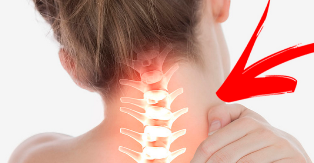
Osteochondrosis of the cervical spine is a serious pathology that is characterized by degenerative-dystrophic changes in the structure of the intervertebral discs. This disorder often leads to dangerous complications. Hence, it is strictly forbidden to ignore it. In order to cope with an illness, it is worth consulting a specialist in a timely manner.
Essence of Pathology
Osteochondrosis of the cervical spine is a pathology in which the soft intervertebral pulp is converted into bone tissue. This leads to a pinching of blood vessels and nerve fibers.
The pain syndrome is a characteristic feature of the disease. It is localized in the neck, shoulders, upper back, and head. Many patients experience dizziness, pressure fluctuations, nausea and lack of air.
Dystrophic changes in the cervical area usually occur in middle and older age. This is due to the vertical position of the skeleton and the peculiarities of the load distribution.
Doctors note that the disease occurs earlier in men. This happens between the ages of 45-50. Women are later faced with manifestations of cervical osteochondrosis - at the age of 50-55.
reasons
Various factors lead to the development of this form of the disease. The main causes of cervical osteochondrosis are:
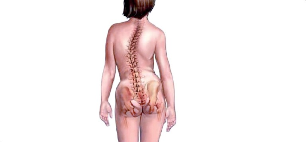
- Lack of physical activity. People who are inactive experience exhaustion of the back muscles that support the spine. This situation can be made worse by the deposition of salts that appear due to lactic acid. A weakened spine deforms more easily and becomes less flexible.
- obesity. Obesity is a major threat to the musculoskeletal system. Adipose tissue not only increases the spine, but also removes beneficial substances that are necessary to maintain the tone of muscle tissue and cartilage.
- Prolonged immobility. This disease is common among drivers and people who work intellectually. After a long stay in a compressed state, the cartilage tissue gradually loses its elasticity. Over time, the intervertebral discs take on an unnatural configuration.
- eating disorders. For the body to function properly, the diet must contain sufficient proteins, fats, minerals and vitamins. Inappropriate nutrition leads to a violation of the structure of the tissue and its rapid destruction.
- back injury. This can lead to a redistribution of pressure on the cartilage tissue, resulting in a change in its structure and shape.
- Pathologies of the musculoskeletal system. This category includes scoliosis, rheumatism, bone tuberculosis.
Cervical osteochondrosis is often the result of a hereditary tendency. In this case, the pathology develops without the influence of significant factors.
In order to prevent the occurrence of the disease, therapy must be started in good time.
disease stages
There are several stages of pathology, each of which is characterized by certain characteristics:
- First, the key sign of the disease is the instability of the spine. It manifests itself in the initial lesions of the intervertebral discs;
- Second, the protrusion is the main manifestation. This condition is characterized by a reduction in the gaps between the vertebrae, a gradual disruption of the integrity of the annulus fibrosus. Nerve compression pain often occurs;
- Third - at this stage the annulus fibrosus is completely destroyed. This leads to the appearance of an intervertebral hernia. This condition is characterized by severe damage to the spine;
- The fourth is the most difficult. At this stage, acute pain occurs with every movement. Sometimes the condition improves, but this indicates the appearance of bone structures connecting the vertebrae. This leads to decreased physical activity and disability.
symptoms
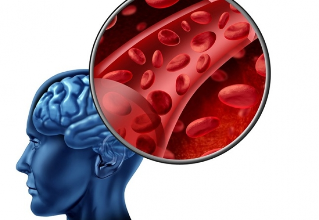
This form of osteochondrosis is characterized by special manifestations. This is due to the narrow position of the cervical vertebrae and the low height of the intervertebral discs. Therefore, even small changes provoke serious manifestations. In addition, this form of osteochondrosis is often accompanied by compression of the roots of the spine.
Symptoms of cervical osteochondrosis include:
- Painful sensations. They are localized in different areas - the back of the head, neck, shoulder girdle, arms. Discomfort in the arms or shoulder girdle is caused by pinched nerves. Pain in the occipital area is associated with spasms of the muscle tissue of the neck and poor blood circulation.
- weakness in the arms. This symptom is caused by damage to the motor nerves that are responsible for innervating the arm muscles.
- weakening of the sensitivity in the hands. This symptom is due to the defeat of the roots, which includes sensory fibers responsible for innervating the skin of the hands.
- Decreased motor activity of the neck, crunching appearance. Such symptoms of cervical osteochondrosis are the result of a decrease in the height of the intervertebral discs. They are also caused by damage to the intervertebral joints and the formation of bone growth on the vertebrae.
- weakness, loss of coordination and dizziness. These manifestations are caused by damage to the vertebral artery. The formation of fibrous tissue and the dislocation of the vertebrae cause problems with blood flow to the arteries. As a result, blood flow deteriorates in the occipital area of the brain and cerebellum.
- Deafness of hearing, numbness of the tongue, decreased visual acuity. These symptoms of osteochondrosis of the cervical spine are caused by the aggravation of the situation and the progression of cerebral circulatory disorders.
diagnostic methods
To detect osteochondrosis of the neck, a number of diagnostic procedures must be performed.The most conclusive studies include the following:
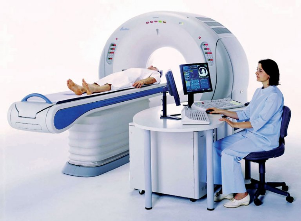
- Magnetic resonance imaging is the most informative study that allows you to assess the condition of the vertebrae and discs between them. With this procedure, it is also possible to detect hernias, determine their size and location.
- Radiography - This procedure is one of the most widely used research methods. However, it often becomes uninformative, especially in the latter stages of the disease.
- Computed tomography - allows you to identify the presence of changes in the structure of the vertebrae. However, the presence of an inguinal hernia or compression of the spinal cord is difficult to diagnose this way.
- Duplex Ultrasound - Aids in the detection of blood flow disorders in the vertebral artery. The procedure detects blockages and slowdowns in blood flow in the vessels.
Treatment methods
The treatment of cervical osteochondrosis is selected taking into account various factors. This is done depending on the stage of the disease, the form of the disease and the severity of the symptoms.
The most important therapies include:
- Conservative therapy - can be medicinal and non-medicinal;
- surgery;
- A combination of conservative techniques and surgical treatment.
Medicines
Treatment of osteochondrosis of the cervical spine can be carried out with the following drug categories:
- Analgesics - These are nonsteroidal drugs that can help manage pain. They are usually prescribed in pill form. It should be noted that most of the funds from this category provoke irritation of the mucous membranes of the digestive organs.
- Anti-inflammatories are hormonal agents that help control inflammation and relieve pain. Usually, with cervical osteochondrosis, tablets and ointments made on the basis of prednisolone are prescribed. Agents with hydrocortisone or dexamethasone can also be used.
- Chondroprotectors - These drugs contain elements that replace the constituent parts of the cartilage tissue. These include hyaluronic acid and chondroitin. In order to achieve a stable positive effect, such funds must be taken for a long time.
- Muscle Relaxants - These drugs help relax muscle tone. They are used in surgical practice and orthopedics as an additional means of pain relief. Such substances are administered parenterally, so it must be done under the supervision of a doctor. With the development of osteochondrosis, drugs based on glycerin and benzimidazole are used. It should be borne in mind that they have many contraindications.
- vitamin complexes. When such osteochondrosis occurs, the use of vitamins is shown, which have a beneficial effect on the nervous system and improve conductivity. This includes group B vitamins. Other vitamins are also shown - A, C, D, E. Many doctors prescribe combined drugs that contain vitamins and pain relievers.
- Topical ointments and gels. Such funds can have different properties - warming, analgesic, anti-inflammatory. Before using any particular product, you must undergo a medical examination.
Physiotherapy methods
Treatment of osteochondrosis of the cervical spine necessarily requires the use of basic methods of physiotherapy.
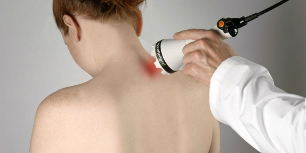
The most effective methods include the following:
- Electrophoresis with drugs. Under the influence of an electric current, the drug particles penetrate the desired area. Aminophylline and novocaine are used for the procedure. Thanks to this, it is possible to stimulate blood circulation and achieve an analgesic effect.
- ultrasonic effect. Thanks to this procedure, it is possible to cope with pain and stop inflammation. This technique also activates metabolic processes in the body.
- magnetotherapy. With its help, it is possible to cope with swelling and achieve an analgesic effect.
- laser exposure. This method helps normalize blood flow and manage inflammation.
Remedial gymnastics
In order for the treatment of cervical chondrosis to be as effective as possible, special exercises must be performed. They are prescribed after relieving the acute symptoms of the disease. It should be borne in mind that there should be no pain or discomfort during the class.
The most effective exercises include the following:
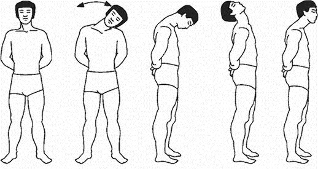
- Lie on your stomach, put your hands on the floor, lift your head and upper body. It pays to make sure that your back stays straight. You need to stay in this position for 1-2 minutes. Then gently lower yourself to the floor. Do 2-3 repetitions.
- Lie on your stomach, straighten your arms, turn your head to the left and touch the floor with your ear. Do a similar move to the right. Do 6-7 times in each direction.
- Sit down and lean forward, lean forward. Touch your chin in your chest. After that, exhale, sit back, and throw your head back. Do 10-15 reps.
- Sit with your palms on your forehead. Press your head on your hands for 30 seconds. There are 2-3 repetitions in total.
- Slowly turn your head in different directions. You need to do 10 turns in each direction. If you feel dizzy, stop exercising.
Massage
To eliminate the signs of cervical osteochondrosis, you should definitely get a massage. The procedure must be carried out as carefully as possible and without great effort. Movements should be extended to the neck, collar and back areas.
It is best to massage lying on your stomach.In extreme cases, the process can be carried out while sitting.
The technique is based on the following techniques:

- Caressing - describes the effect on the superficial areas of the skin. To do this, use the palms of your hands or fingertips to stroke your back and move from your head to the top third of your back. You can also make zigzag movements.
- Squeezing - is the effect on the deep areas of the skin in the upper third of the back. To do this, grasp the skin with your thumb and index finger. This should be done very carefully without affecting the tissues in the vertebral area.
- Rubbing - The procedure is done to warm up the skin and increase blood flow to the collar area. It should be done very carefully without affecting the spine areas of the vertebrae.
- Kneading is used quite seldom because it affects deep tissue. This can only make the anomaly worse.
For osteochondrosis, self-massage is quite possible.To do this, you need to sit comfortably and use the methods of stroking and rubbing the neck and shoulders. It is advisable to supplement the procedure with rubbing in ointments that increase blood flow and relieve pain in the affected area.
Surgical treatment
Surgical intervention is indicated in the following cases:
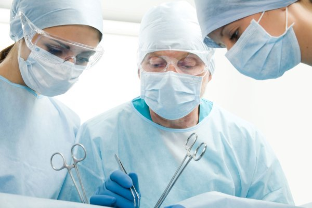
- The presence of neurological abnormalities - impaired motor activity, weakness or loss of sensitivity in the hands, loss of control of bowel movements. If such symptoms occur, ongoing nerve damage can be suspected. This is why it is so important to go through the un-compression process.
- The presence of persistent pain that affects a person's quality of life and cannot be eliminated using conservative methods.
With the development of cervical osteochondrosis, the following operations can be performed:
- Anterior cervical discectomy and fusion. The operation is performed through the front of the neck. The aim of the procedure is to remove the affected disc, decompress the nerve fibers, and implant a special device to maintain the desired distance between the vertebrae.
- Replacement of the intervertebral disc. In this case, the affected disc is removed and an artificial one is inserted instead. Thanks to this procedure, it is possible to maintain physical activity.
Surgery to remove neurological symptoms is very effective. According to some estimates, it is 80-90%. However, such procedures are not sufficiently effective in relieving pain associated with osteochondrosis.
Possible dangers
Cervical osteochondrosis is a serious type of pathology. This area of the spine contains many nerves and blood vessels that are responsible for nourishing the brain. In addition, the cervical vertebrae are tight. Even small changes in this area lead to a compression or displacement of blood vessels and nerves.
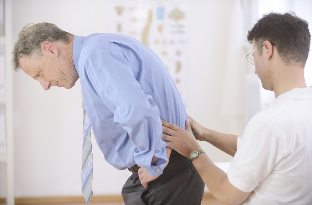
Disorders of the cerebral blood flow lead to the occurrence of migraines, vegetative-vascular dystonia and high blood pressure. There is also a risk of dysfunction of the respiratory tract, heart and blood vessels. Many people have a hearing loss, decreased visual acuity and poor coordination of movements.
In difficult situations, cervical osteochondrosis leads to the syndrome of the vertebral arteries. This vessel is responsible for the blood supply to the cerebellum and the medulla oblongata. Compression of the artery carries the risk of cerebral ischemia and spinal stroke.
In addition, a pathology can damage the nerve roots. This is manifested in the formation of growths, the appearance of radiculopathy and the loss of physical activity. The most difficult consequence of the disease is compression of the spinal cord, which can be fatal.
Prevention
To avoid the development of pathology, simple rules should be followed:
- Train systematically;
- Eat right;
- Take vitamins and chondroprotectors prescribed by a doctor;
- Avoid prolonged uncomfortable postures;
- Use orthopedic furniture;
- Choose clothes and shoes depending on the season, especially in winter.
Cervical osteochondrosis is a rather dangerous disease that can lead to negative health consequences.
To avoid serious complications, you should consult your doctor immediately and follow his recommendations carefully.






















